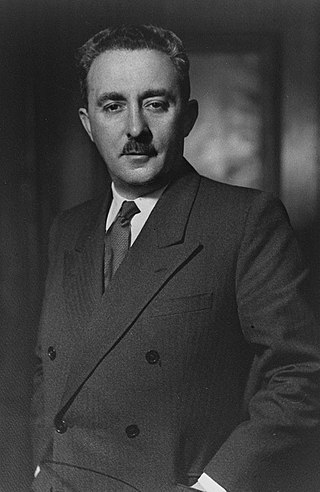| |||||
| Decades: | |||||
|---|---|---|---|---|---|
| See also: | |||||
Events in the year 1951 in Israel.
| |||||
| Decades: | |||||
|---|---|---|---|---|---|
| See also: | |||||
Events in the year 1951 in Israel.
| | This section needs expansion. You can help by adding to it. (August 2010) |

The following events took place during 1951 (dates not specified):
|

Moshe Dayan was an Israeli military leader and politician. As commander of the Jerusalem front in the 1948 Arab–Israeli War, Chief of Staff of the Israel Defense Forces (1953–1958) during the 1956 Suez Crisis, but mainly as Defense Minister during the Six-Day War in 1967, he became a worldwide fighting symbol of the new state of Israel.

Moshe Sharett was an Israeli politician who served as the second prime minister of Israel from 1954 to 1955. A member of Mapai, Sharett's term was both preceded and succeeded by the premiership of David Ben-Gurion. He also served as the country's first foreign minister between 1948 and 1956.
The General Zionists were a centrist Zionist movement and a political party in Israel. The General Zionists supported the leadership of Chaim Weizmann and their views were largely colored by central European culture. Their political arm is one of the ancestors of the modern-day Likud.

Hamat Gader is a hot springs site in the Yarmuk River valley, located in an area under Israeli control, near the Golan Heights and the border with Jordan.

Constituent Assembly elections were held in newly independent Israel on 25 January 1949. Voter turnout was 86.9%. Two days after its first meeting on 14 February 1949, legislators voted to change the name of the body to the Knesset. It is known today as the First Knesset.

Yosef Sprinzak was a leading Zionist activist in the first half of the 20th century, an Israeli politician, and the first Speaker of the Knesset, a role he held from 1949 until his death in 1959.

The second government of Israel was formed during the first Knesset. David Ben-Gurion made an attempt to form a minority government consisting of Mapai and Sephardim and Oriental Communities on 17 October, but it was not approved by the Knesset. Two days later President Chaim Weizmann asked Progressive Party leader Pinchas Rosen to form a government, but it was Ben-Gurion who finally managed to do so on 1 November 1950. The coalition partners were the same as in the first government: Mapai, the United Religious Front, the Progressive Party, the Sephardim and Oriental Communities and the Democratic List of Nazareth.
An election for President of Israel was held in the Knesset on 8 December 1952 following the death of the Israel's first president, Chaim Weizmann on 9 November. Between Weizmann's death and the winner of the election, Yitzhak Ben-Zvi, taking office on 16 December, Knesset speaker Yosef Sprinzak served as acting president.

Al-Hamma was a Palestinian Arab village in the Tiberias Subdistrict, 12 kilometres (7.5 mi) southeast of Tiberias. It was situated on a narrow salient in the Yarmouk Valley bounded by Syria to the north and Transjordan to the south and east. Al-Hamma was one of the stations on the Jezreel Valley railway, linking the Hejaz Railway to Haifa. It was depopulated twice, once in July 1949, and again between 1949 and 1956.

Reprisal operations were raids carried out by the Israel Defense Forces in the 1950s and 1960s in response to frequent fedayeen attacks during which armed Arab militants infiltrated Israel from Syria, Egypt, and Jordan to carry out attacks on Israeli civilians and soldiers. Most of the reprisal operations followed raids that resulted in Israeli fatalities. The goal of these operations – from the perspective of Israeli officials – was to create deterrence and prevent future attacks. Two other factors behind the raids were restoring public morale and training newly formed army units. A number of these operations involved attacking villages and Palestinian civilians in the West Bank, including the 1953 Qibya massacre.
Events in the year 1962 in Israel.
Events in the year 1960 in Israel.
Events in the year 1959 in Israel.
Events in the year 1955 in Israel.
Events in the year 1954 in Israel.
Events in the year 1949 in Israel.
Events in the year 1950 in Israel.
Events in the year 1952 in Israel
The al-Hamma Incident refers to an event on 4 April 1951 that resulted in the death of seven IDF soldiers at the hands of Syrian military forces. The action occurred during an Israeli attempt to enforce its claimed sovereignty over the demilitarized zone along the Syrian border.

Ahdut HaAvoda was the name used by a series of political parties. Ahdut HaAvoda in its first incarnation was led by David Ben-Gurion. It was first established during the period of British Mandate and later became part of the Israeli political establishment. It was one of the forerunners of the modern-day Israeli Labor Party.